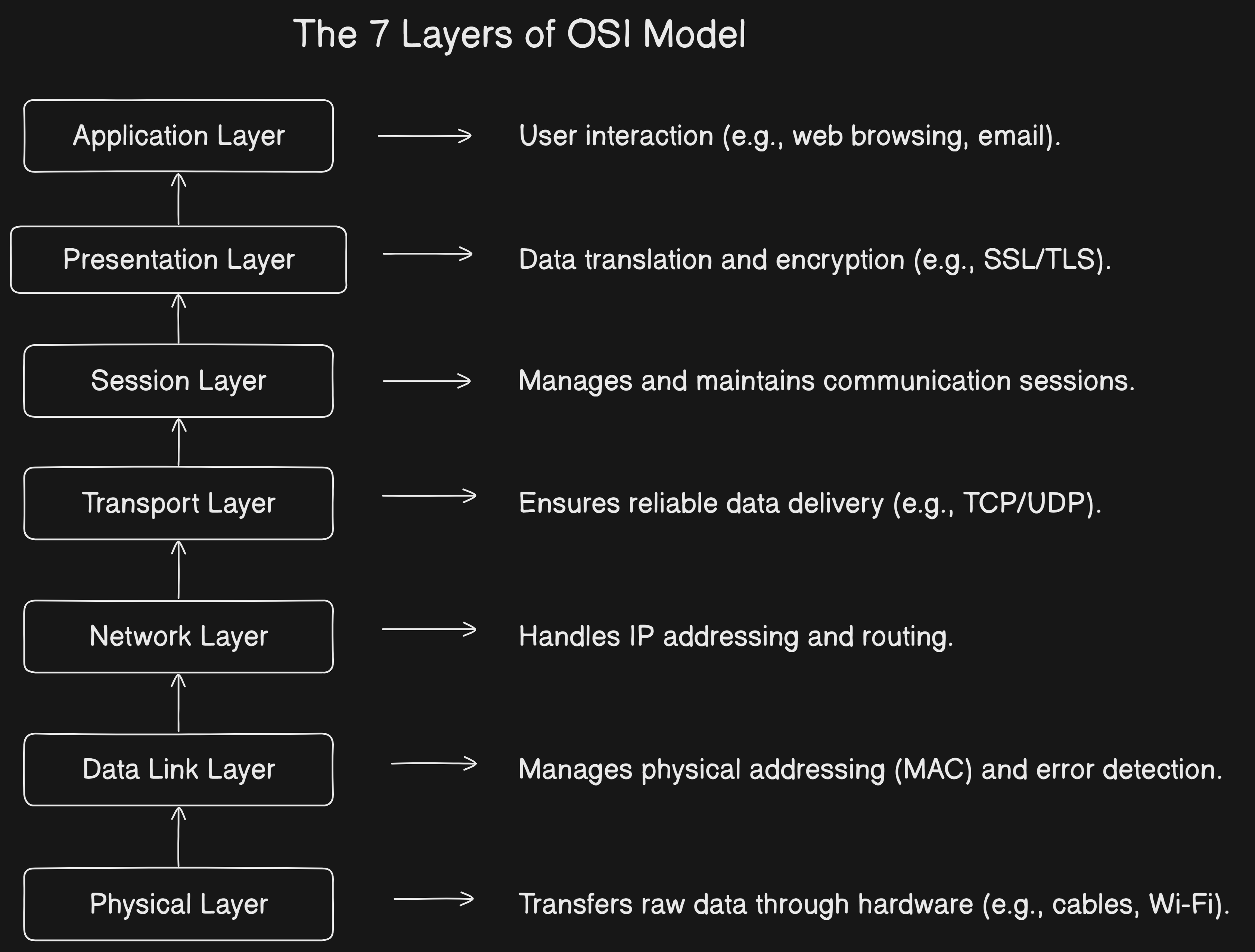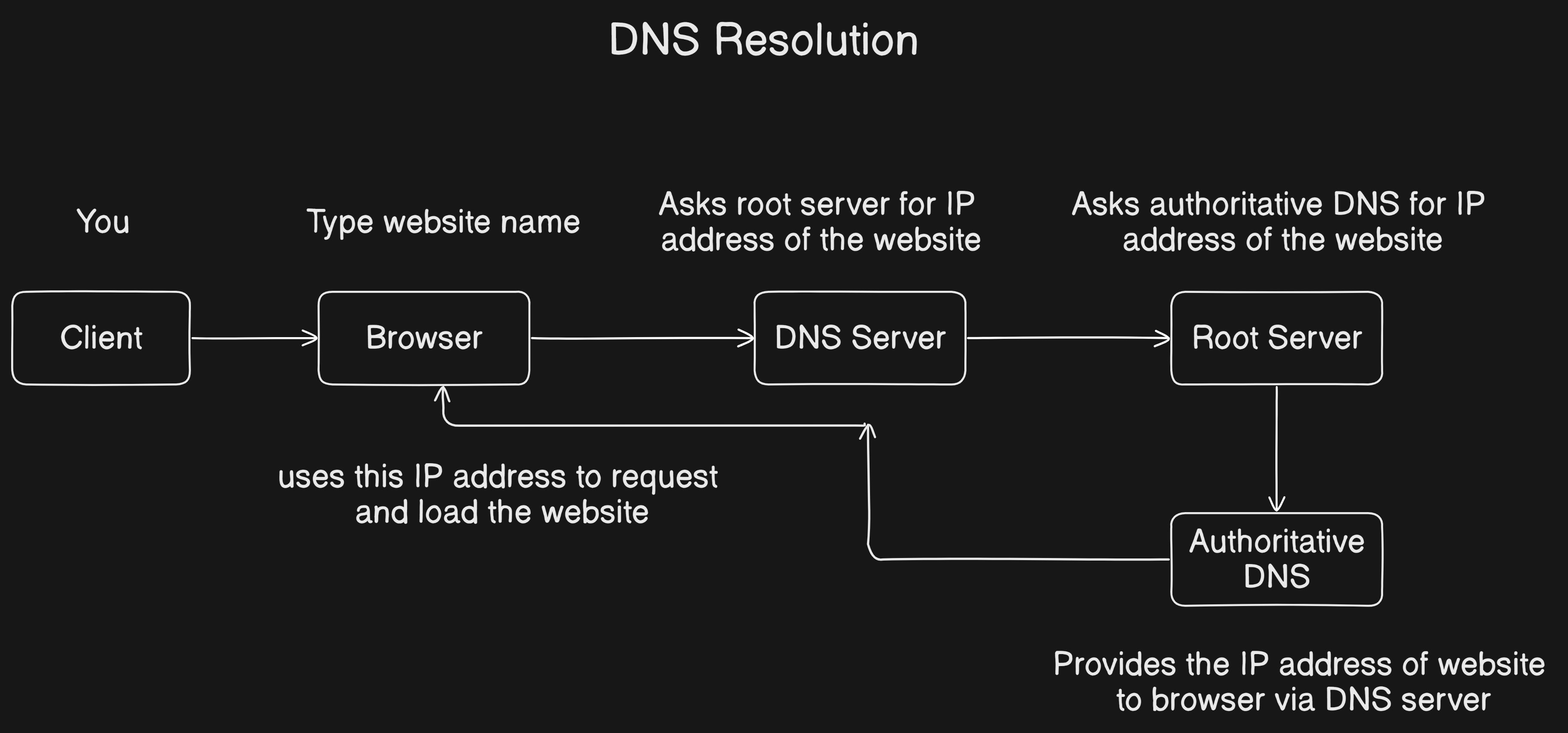Breaking Down the World Wide Web : A Beginner's Guide
 Aftab Ahmed
Aftab Ahmed
"Have you ever wondered how typing a website address magically loads a page? Behind the scenes, a complex system of protocols and processes works seamlessly to deliver data across the globe."
In this article we will talk about:
How devices communicate over the internet
An overview of the OSI Model and how it guides data flow
Key processes like DNS resolution and the Request-Response Model
Understanding the Request-Response Model :

At the core of how the internet works is the Request-Response Model, which defines how your device (the client) interacts with a server to fetch data.
Client (Your Device): This is usually your web browser (like Chrome or Firefox) or any application that wants to access information from the internet.
Request: When you visit a website, your browser sends an HTTP request to a web server. This request typically asks for resources like web pages, images, or data.
Server: The web server is a powerful computer that stores and processes information. Upon receiving the request, it locates the required data and prepares a response.
Response: The server sends an HTTP response back to the client, containing the requested content (such as an HTML page, image, or data). If something goes wrong (e.g., a page doesn’t exist), the server replies with an error message like 404 Not Found.
Understanding the OSI model :
The OSI (Open Systems Interconnection) Model is a conceptual framework that explains how data travels between devices over a network. It consists of 7 layers, each handling a specific function in the communication process:

DNS Resolution (How Websites Are Found) :
DNS (Domain Name System) converts human-readable website addresses (like www.example.com) into machine-readable IP addresses (like 192.168.1.1).
How it works:
You enter a website URL in your browser.
The browser asks a DNS resolver to find the website’s IP address.
If needed, the resolver contacts higher-level servers (Root, TLD, and Authoritative) to get the correct IP.
The IP address is returned, and the browser loads the website.

Conclusion :
The internet functions through a series of structured processes where user requests are sent to servers, and responses are delivered back. The OSI model standardizes how data flows through networks, while the DNS system ensures that humans can access online content using easy-to-remember domain names. Together, these systems form the foundation of modern digital communication, enabling seamless and efficient online experiences.
Subscribe to my newsletter
Read articles from Aftab Ahmed directly inside your inbox. Subscribe to the newsletter, and don't miss out.
Written by
